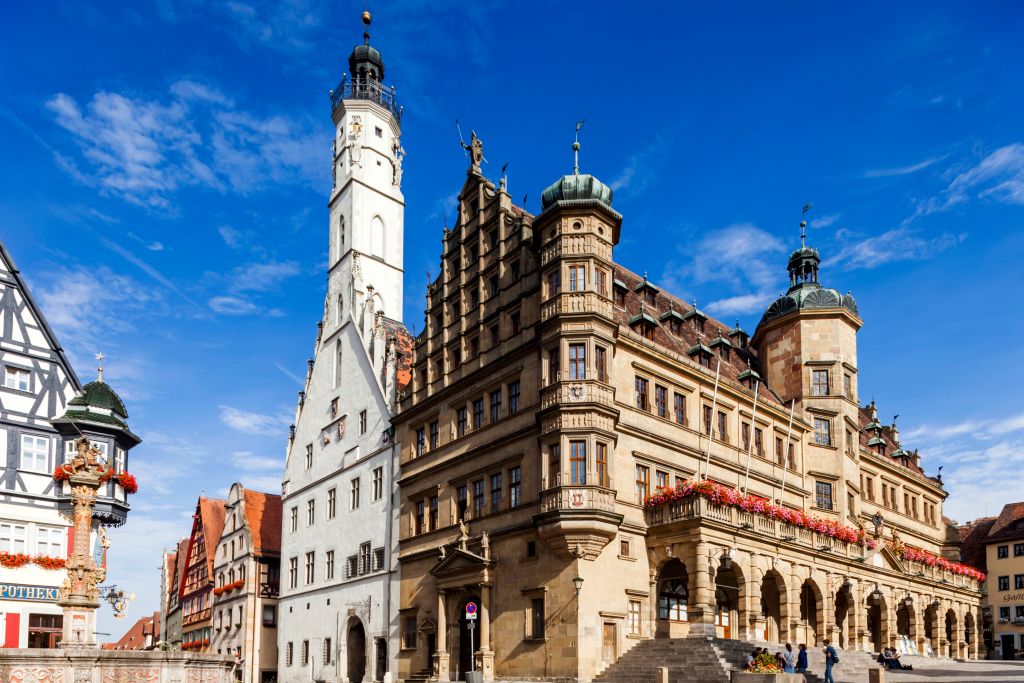On the map of Europe there are many small towns and villages unknown to tourists, which still retain the spirit of the Middle Ages. Their visit usually does not take much time, but gives a lot of impressions. Have you heard of them?
Rothenburg ob der Tauber (Germany)

Rothenburg ob der Tauber is a tiny “toy town” located in Bavarian Ansbach. It is known for medieval architecture, which has been preserved in the Old Town almost unchanged. Tourists should pay attention not only to the town hall tower, St. Jacob’s Church and Gerlach’s forge, but also to the Roeder Gate and arch, Ratstrinkstube building with a clock and the Museum of the Nativity. Local residents carefully monitor the safety of the city and do not allow the installation of modern signs, telephone boxes or vending machines.
Sant’Agata de Gotti (Italy)

Another small town, saturated with the spirit of the Middle Ages, is located in the Italian region of Campania. Sant’Agata de Gothi is located on the steep bank of the mountain river Martorano. The photographs that tourists take from the bridge over this river have become the hallmark of the city: the houses erected on the edge of the gorge seem to grow out of the rocks. In Sant’Agata de Gothi there are many arches, picturesque cozy streets and temples. You can go to the local cathedral, the church of St. Mennato or the Gothic church of Annunziata. In addition, tourists can explore the Norman castle with frescoes by the artist Tommaso Giaquinto.
Eze (France)

Eze is more of a medieval village than a city. It offers a fabulous view of the Mediterranean Sea. The village is located between Nice and Monaco. It has the ruins of an ancient fortress and an exotic garden. Once in Eze lived the German philosopher Friedrich Nietzsche. The trail, which he regularly used, has survived to the present day and bears his name. The Church of the Penitent of the White Brotherhood, built in the XIV century, is considered the oldest building in the village.
Besalu (Spain)

Founded by the Romans, Besalu is located in the Spanish region of La Garrocha. Although the city has changed a lot since its foundation, the most significant architectural sights have remained unchanged to this day. The seven-span defensive bridge became the most popular place for photographing among tourists. The historic center of the city also houses the impressive Monastery of St. Peter, a grandiose example of Romanesque architecture. By the way, Besalu can be seen in the movie Perfumer. The story of one killer. “
Monsanto (Portugal)

The village of Monsanto in 1938 received the title of “The Most Portuguese Village of Portugal.” It is located in the central part of the country and is located among the giant cobblestones that have become full-fledged components of urban architecture. Sometimes it’s hard to understand where the stone ends and the house begins. Tourists can climb the mountain and enjoy the view of the surroundings. Also in the village you can see the remains of the fortress wall (pictured) and the chapel of San Miguel. In Monsanto itself, there are several noteworthy churches and the 15th-century Lucano Tower, towering above the rest of the buildings.
Gruyeres (Switzerland)

The Swiss town of Gruyeres is known primarily for its cheese of the same name. You can not only try cheese here, but also observe the procedure for its preparation. There is only one street in Gruyeres, so it is impossible to get lost here. The main attraction of the town is the local castle, more like a fortress. Next to it is a small French garden. In addition, in the town there is a museum of the Swiss artist Hans Rudy Giger , whose works were used in the film “Alien”.
Hallstatt (Austria)

Another village that attracts travelers with picturesque views and the spirit of antiquity is Hallstatt, located in Upper Austria. The village seemed to have left the picture. Its fabulous appearance is so amazing that in 2012 in the south of China they created an exact copy of Hallstatt. The history of the village is closely related to the extraction of rock salt. Most of all, the village is struck by the calm, peaceful atmosphere and unhurried pace of life. Fans of historic sites will love the 13th-century Rudolfsturm Tower, the Church of the Assumption of the Virgin and the Bone House with a collection of skulls.
Photo: Getty Images


